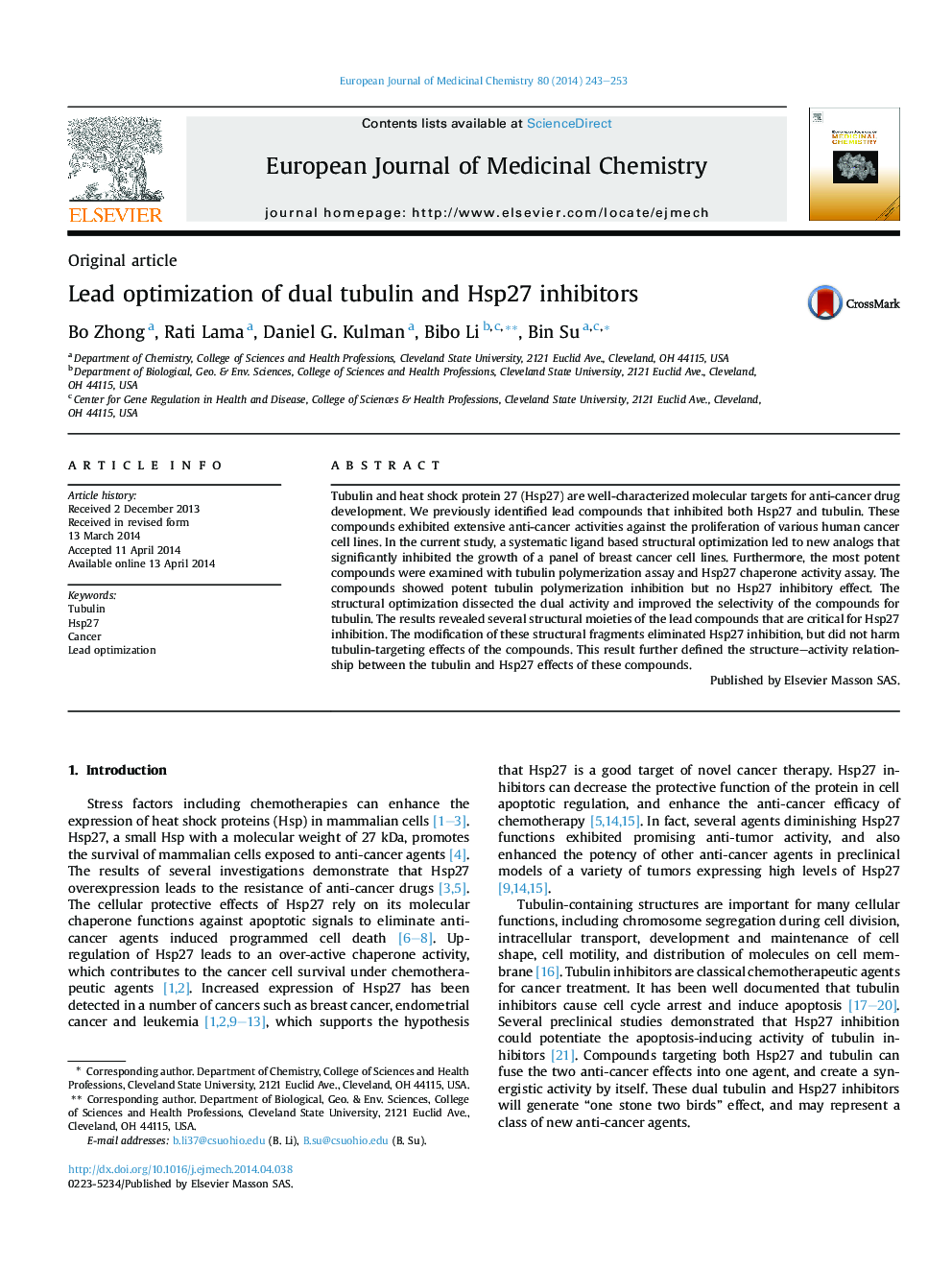| Article ID | Journal | Published Year | Pages | File Type |
|---|---|---|---|---|
| 1394104 | European Journal of Medicinal Chemistry | 2014 | 11 Pages |
•Systematic ligand based structural optimization of dual tubulin and Hsp27 inhibitor led to new analogs.•The inhibition on the proliferation of four panels of breast cancer cells of the derivatives was determined.•The lead optimization dissected the dual activity and improved the selectivity of the compounds for tubulin.•Several structural moieties of the lead compounds were revealed to be critical for Hsp27 inhibition.
Tubulin and heat shock protein 27 (Hsp27) are well-characterized molecular targets for anti-cancer drug development. We previously identified lead compounds that inhibited both Hsp27 and tubulin. These compounds exhibited extensive anti-cancer activities against the proliferation of various human cancer cell lines. In the current study, a systematic ligand based structural optimization led to new analogs that significantly inhibited the growth of a panel of breast cancer cell lines. Furthermore, the most potent compounds were examined with tubulin polymerization assay and Hsp27 chaperone activity assay. The compounds showed potent tubulin polymerization inhibition but no Hsp27 inhibitory effect. The structural optimization dissected the dual activity and improved the selectivity of the compounds for tubulin. The results revealed several structural moieties of the lead compounds that are critical for Hsp27 inhibition. The modification of these structural fragments eliminated Hsp27 inhibition, but did not harm tubulin-targeting effects of the compounds. This result further defined the structure–activity relationship between the tubulin and Hsp27 effects of these compounds.
Graphical abstractFigure optionsDownload full-size imageDownload as PowerPoint slide
